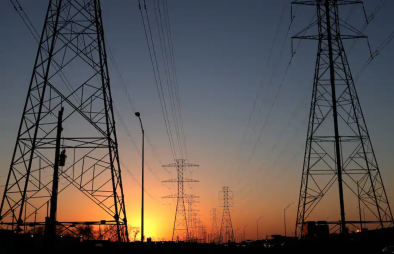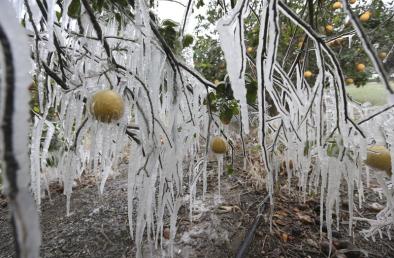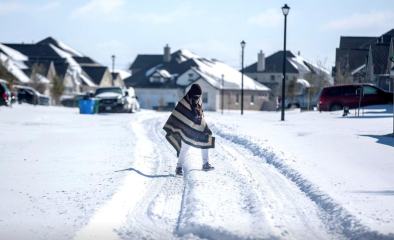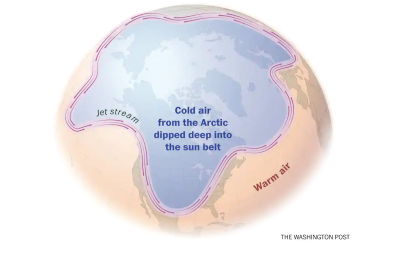Climate change and record cold: What's behind the arctic extremes in Texas
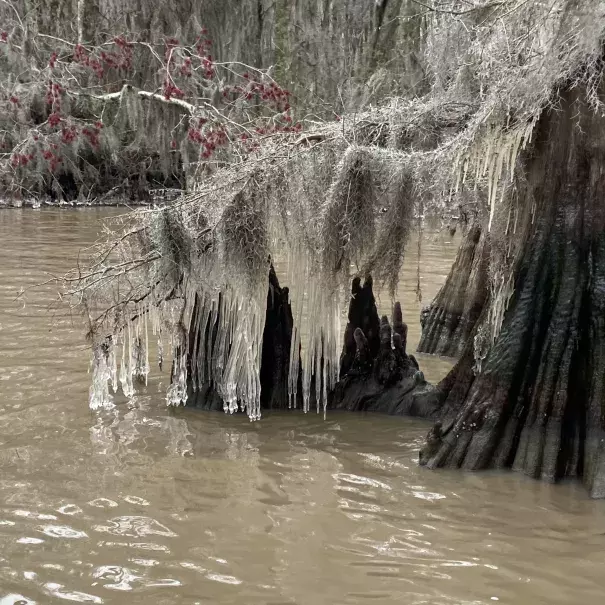
Climate Signals Summary: There are four things to consider when squaring this extreme winter weather with climate change: cold weather doesn’t cancel out decades of warming; cold events aren’t as cold as they would have been without climate change; rapid Arctic warming is associated with disruptive winter weather in the US; and climate change increases atmospheric moisture, which leads to heavier rain and snowfall.
Arcticle Excerpt:
[W]ith climate change making for generally warmer winters and causing heat records to outnumber cold records by 2 to 1 globally over the past decade, this historic cold snap may seem counterintuitive. It's not. In fact, paradoxically, a warmer climate may have actually contributed to the extreme cold.
The science of meteorology has come a long way in the past few decades, so much so that meteorologists saw this extreme winter weather coming many weeks in advance. That's because this extreme pattern was initiated by a large and recognizable phenomenon which unfolded in the Arctic at the beginning of the year called Sudden Stratospheric Warming, or SSW.
CBS News previewed the wild winter weather in this January 7th article, explaining how over the course of just a few days in late December and early January, temperatures in the atmosphere high above the North Pole warmed by 100 degrees Fahrenheit — jumping from minus-110 degrees Fahrenheit to minus-10.
SSW's are a natural occurrence which happen every couple of winters and portend extreme weather in the weeks following them. That's because when the Arctic warms rapidly it disrupts a spinning mass of cold air — the polar vortex — a semi-permanent weather system which is present each winter.
Normally the jet stream winds around the vortex and acts as a lasso of sorts, keeping the cold air trapped inside. But when it gets warm in the Arctic, the jet stream weakens and elongates, allowing the cold air to plunge south.
This enables a broad mountain of warm air to form over the Arctic, temporarily supplanting the cold vortex. The warm mountain acts as an atmospheric block, redirecting the jet stream and bitter cold air southward.
While this bitter cold air mass was certainly memorable for the upper Midwest, it wasn't all that out of the ordinary for them. The record set back in 1899 was much more widespread and severe in the northern tier of the U.S.
What made this particular situation historic was that the core of the cold air — a piece of the polar vortex — plunged much further south than it really ever does: a full 4,000 miles from its usual home near the North Pole.
...
The recent extreme weather was not limited to the U.S. When the jet stream is extreme in one region, it is often extreme all across the globe. In Saudi Arabia, snow-covered camels made for a rare, but not unheard of, sight.
Snow also fell in Jerusalem and parts of Jordan and Syria, while at the same time record heat was impacting other parts of the Middle East like Iraq, where the temperature soared to 93 degrees in winter.
...
While this extreme cold paired with extreme heat may seem odd, it's actually what meteorologists would expect of a wavy jet stream. Think of it this way: what goes up must come down. When the atmosphere forces cold air south, there must be an equal and opposite reaction forcing warm air north. When air masses are displaced into places they don't typically visit, weather extremes and the impacts they bring to society follow.
A number of climate scientists think that climate change may not only be making sudden stratospheric warming more likely, but that climate change itself may have a similar effect in the Arctic, because it is also causing significant warming. Due to human-caused climate change, the Arctic is warming at three times the pace of the global average.
The wavy jet stream theory, as it relates to climate change, was pioneered by Dr. Jennifer Francis at Woodwell Climate Research Center. The theory makes logical sense: Arctic warming reduces the gradient between warm and cold air, and thus weakens the temperature contrast mechanism which powers the strength of the jet stream. That results in a weaker, more wavy jet stream, which is more likely to spill its cold air southward.
Related Content
